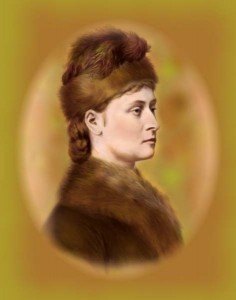

In 1878, Queen Victoria’s son-in-law, John Campbell, Lord Lorne was appointed the fourth Governor General of Canada since Confederation. The arrival of Lord Lorne and his wife, Princess Louise, in Halifax to travel through Quebec City and Montreal to Ottawa to take up residence in Rideau Hall was the first post-confederation royal tour. Princess Louise was the first female member of the royal family to cross the Atlantic and visit North America. Historians often discuss Lord Lorne and the other British born Governors General of the 19th centuries as examples of Canada’s continued British identity after Confederation. The arrival of Lord Lorne and Princess Louise in 1878, however, provided an opportunity for Canadians to assert their nascent national identity by expressing their expectations of the new Vice Regal couple as Canadians. Newspaper coverage, correspondence and popular publications discussing the appointment of Lord Lorne and the arrival of the royal couple highlighted three key aspects of the emerging Canadian identity in 1878.
These cultural trends were loyalty to the crown (in contrast to the United States), a democratic society without class distinctions (in contrast to Great Britain) and a uniquely Canadian engagement with winter sports and the natural world. The enthusiastic welcome provided for the royal couple as they traveled from Halifax to Ottawa combined with the popular concerns that they would expect the same degree of deference accorded to members of the royal family reflected the emergence of a unique national culture in nineteenth century Canada. Lord Lorne and Princess Louise achieved popularity during their first months in Canada by responding to these expectations, holding broadly accessible events at Rideau Hall and embracing Canadian outdoor pastimes such as curling, fishing, skating and tobogganing. The arrival of the royal couple in Canada in 1878 provided the impetus for the articulation of a Canadian identity distinct from both Great Britain and the United States.
Click here to purchase Canada and the Crown: Essays in Constitutional Monarchy from Amazon.
Click here to purchase Canada and Crown directly from McGill-Queen’s University Press.
